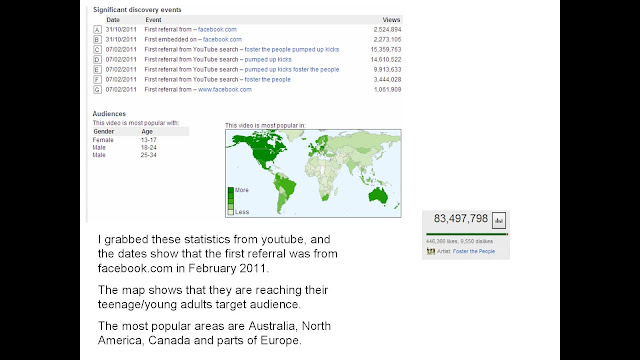1. What are the men/women doing?
The first shot of the band is of one of the members playing guitar, so we immediately can tell that the music is very important to them and so that’s what they want to draw attention to.
2. How are the men/women dressed?
The video is in black and white, but you can tell that they are wearing all dark clothes, the first man we see has long dark curly hair which virtually covers the whole of his face with a tall black hat on top. His clothes are a black top with what looks like a leather jacket with a denim jacket on top but the sleeves have been ripped off. The rest of the members are all dressed in very similar dark, leather, jewellery and long messy hair. This style is rock/punk a way people used to dress to express themselves in extreme ways. It isn’t a style where lots of skin is revealed, it’s more about being covered in dark colours and jewellery, the skin you can see is full of tattoos.
3. Are there more, fewer, or the same number of men as women?
The band is all boys but the scene is them being filmed rehearsing in a ballroom, all the band members current girlfriends are shown in the video so their is a fairly even number.
4. Describe the body language of the men/women: are they sitting, standing or gyrating?
The body language of the band are very together with their instruments, the musicians look very ‘in the zone’ while they are playing either dancing around or doing very classic rock movement s with their instruments. The other shots of them are acting chilled out, sitting around or having a cigarette. As the song gets further in mainly the leader singer gets more and wilder with the music.
5. Do the men/women have power? How do you know?
The band members are the only really important people in the video as it revolves around them and they have the most of the screen time, the leaders singer has the most of them, so they must have the power as all the other people around are their for them weather there to film, work for them or just to support.
6. What’s the message of the song?
The message of the song is all about a girl and love, a very common theme of song as women are often used as muses.
7. What type of music is the song?
The genre of music is hard rock, which is similar to the rest of their songs which can also fit into the heavy metal genre.



































